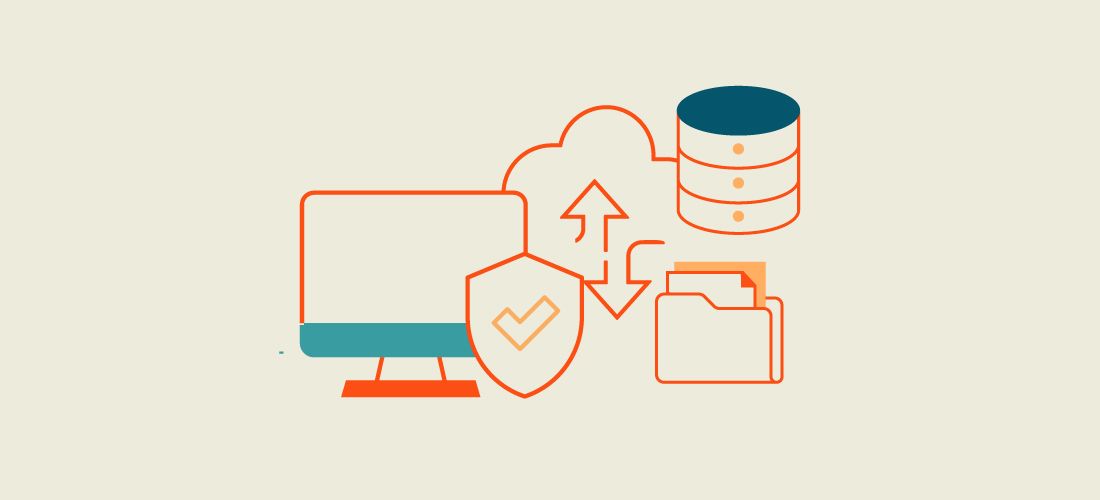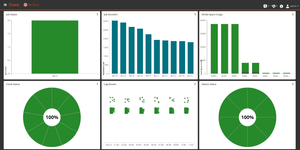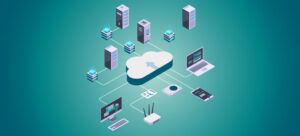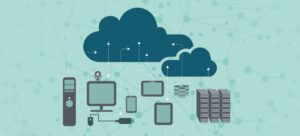
Cyberattacks are no longer confined to primary systems. Instead, a major focus of modern attacks has shifted toward secure data backup systems. Alarmingly, 96% of attacks target backup repositories, which were traditionally considered a safety net against data loss. With 76% of companies experiencing unexpected data loss and nearly half losing their data permanently, it’s clear that backup systems are under siege. Cybercriminals have realized that by compromising backups, they can significantly increase their damage and leverage.
Why are backups being targeted in cyberattacks?
The rise of ransomware
Ransomware has evolved from just encrypting critical data to demanding payment to restore access. If an organization has reliable and untouched backups, they can recover data without giving in to the ransom demands. However, if the attackers can successfully compromise these backups, organizations lose their ability to restore data. This leaves victims with fewer options, forcing them to either pay the ransom or face significant downtime and data loss.
Access to an organization’s complete dataset
Secure data backups contain an entire company’s information set, including critical business data, financial records and intellectual property. This makes them a lucrative target for data theft or extortion. By targeting backup systems, attackers can steal sensitive data and threaten to leak it if the organization refuses to comply with their demands.
Perceived vulnerabilities
Organizations are often lax in securing backups compared to primary systems. While companies may implement stringent security measures for their live systems, backup systems may not receive the same level of attention. Poor security practices, such as weak access controls, outdated software and lack of encryption, make backups an easy target for cybercriminals.
Disrupting recovery
Moreover, backups are essential for business continuity and disaster recovery. If attackers can disrupt or destroy backups, they can cripple an organization’s ability to recover from an attack. This can lead to prolonged downtime, financial losses, reputational damage and even regulatory penalties. By targeting backups, cybercriminals aim to amplify the overall impact of their attacks.
In summary, backups are increasingly targeted because they are a critical lifeline for organizations and compromising them increases the attackers’ leverage. The combination of ransomware attacks, data theft and the perceived vulnerability of backup systems makes them an attractive target for cybercriminals.
Types of backup attacks
Cybercriminals employ various techniques to target and compromise secure data backup systems. Understanding these types of attacks is essential for organizations to strengthen their defenses.
Ransomware attacks on backups
Ransomware attacks often extend beyond primary systems to backup files and repositories. Modern ransomware variants are designed to search for and encrypt backup data, including network-attached storage (NAS), external drives, cloud backups and even shadow copies. By rendering backups useless, attackers ensure that victims have no choice but to pay the ransom.
Backup data corruption
In this type of attack, cybercriminals deliberately corrupt backup files to make them unrecoverable. This can be achieved by injecting malicious code or altering the data structure. Corruption may go unnoticed until an organization attempts to restore from the compromised backup, only to discover that the data is unusable.
Deletion or overwriting of backups
Attackers who gain access to backup systems may delete or overwrite backup files. Deletion can occur directly by deleting stored backups or indirectly by disabling backup processes, leading to the loss of recent recovery points. Overwriting backup data ensures that old versions are replaced with malicious or incomplete data.
Credential compromise and unauthorized access
Secure data backup systems are often accessed via administrative credentials. Cybercriminals may steal or brute-force these credentials to gain unauthorized access to backup servers or cloud repositories. Once inside, attackers can exfiltrate, delete or encrypt backup data.
Exfiltration of backup data
In addition to targeting backup files for encryption or destruction, attackers may also exfiltrate sensitive backup data for extortion. Stolen data can be used to pressure organizations into paying ransoms, as attackers threaten to leak confidential or proprietary information publicly.
Targeting backup software vulnerabilities
Many backup systems rely on specialized software for storage and management. Vulnerabilities in backup software can be exploited to gain unauthorized access or control. Attackers may use these vulnerabilities to tamper with backups, disable recovery processes or exfiltrate data.

Protect all your systems, applications and data.
Man-in-the-middle (MITM) attacks on backup transfers
During data transfers to and from backup systems, attackers may intercept and tamper with backup data using man-in-the-middle techniques. This can lead to data corruption, exfiltration or unauthorized modifications to backups.
By understanding these attack vectors, organizations can take proactive measures to secure their backup systems and prevent potential threats.
Steps to secure your backup data
Protecting backup data is essential for maintaining business continuity and recovering from cyber incidents. Implementing the following steps can help organizations secure data backups and reduce the risk of compromise.
1. Implement strong access controls
- Restrict access to backup systems using the principle of least privilege. Only authorized personnel should have access to backup servers, files and software.
- Use multi-factor authentication (MFA) for administrative accounts to add an additional layer of security.
- Regularly audit access permissions and revoke unnecessary privileges.
2. Encrypt backup data
- Use strong encryption algorithms to protect backup data both in transit and at rest. This ensures that even if attackers gain access to the data, they cannot use it without the encryption keys.
- Store encryption keys securely, separate from the backup systems, to prevent unauthorized access.
3. Segment backup systems from the network
- Isolate secure data backup systems from the primary network to reduce their exposure to cyberattacks. Implement network segmentation and firewalls to restrict access.
- Store critical backups in air-gapped systems or offline storage to prevent ransomware or unauthorized access.
4. Implement immutable backups
- Use immutable storage solutions for backups, where data cannot be altered, deleted or encrypted for a specified period. This protects backups from ransomware and other malicious attacks.
- Regularly test and validate the immutability of your backup storage.
5. Maintain multiple backup copies (3-2-1 rule)
- Follow the 3-2-1 backup rule: Maintain three copies of your data, store them on two different types of media and keep one copy offsite or offline.
- Diversifying backup locations reduces the risk of a single point of failure.
6. Regularly test backup integrity
- Regularly test and verify the integrity of your secure data backups to ensure they are recoverable in the event of an attack. Perform full and partial recovery tests to validate the process.
- Identify and address any issues with backup data or systems promptly.
7. Monitor backup systems for anomalous activity
- Implement monitoring tools to detect unusual or unauthorized activities on backup systems. This includes unexpected access, deletions or changes to backup files.
- Set up automated alerts for suspicious behavior, enabling rapid response to potential threats.
8. Scan backup data sets
- After backup of production data, scan the data set for any latent malware or infected files.
- Automate the scanning of backup data such that each new iteration that is backed up is scanned.
- Ensure that backup data is scanned for any malware or infected files before any restoration of data is carried out.
9. Patch and update backup software
- Keep backup software and systems up to date with the latest security patches. Vulnerabilities in backup software and operating systems can be exploited by attackers to compromise backups.
- Enable automatic updates where possible and regularly review patch management processes.
10. Implement ransomware protection
- Use anti-ransomware solutions to detect and prevent ransomware attacks on backup systems. Implement endpoint protection, firewalls and intrusion detection systems (IDS).
- Ensure that ransomware protection extends to backup servers and repositories.
11. Educate employees on backup security
- Train employees to recognize phishing attempts, malware and other common cyber threats that could compromise credentials or backup systems.
- Emphasize the importance of secure practices when handling backups.
12. Create a disaster recovery plan
- Develop and maintain a comprehensive disaster recovery plan that includes clear procedures for restoring data from backups in the event of an attack.
- Regularly review and update the plan to address new threats and technologies.
By implementing these measures, organizations can enhance the security of their backup systems and ensure that they remain reliable and resilient in the face of cyberattacks. Secure data backups not only protect critical data but also enable businesses to recover quickly, minimizing downtime and disruption.



